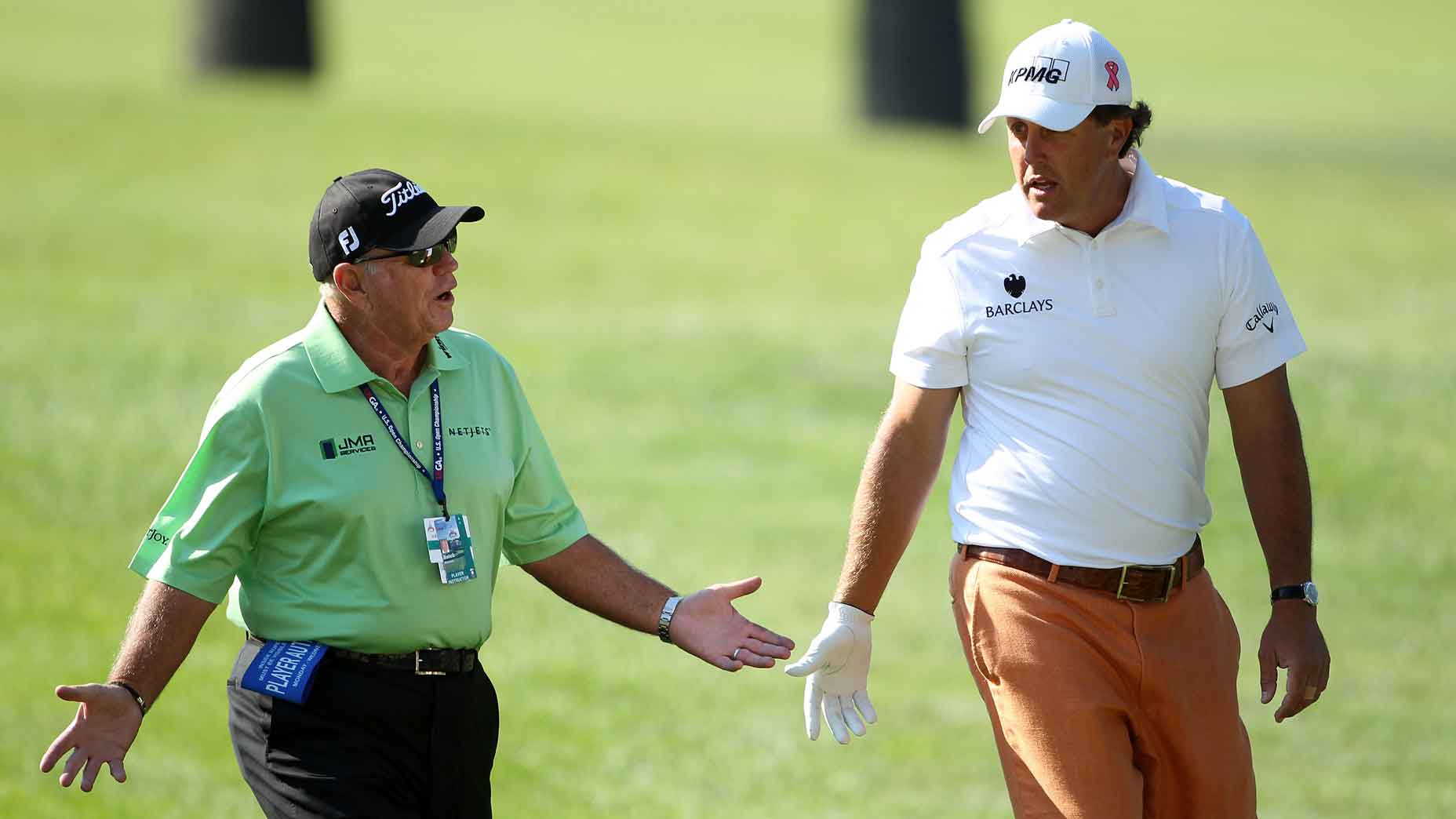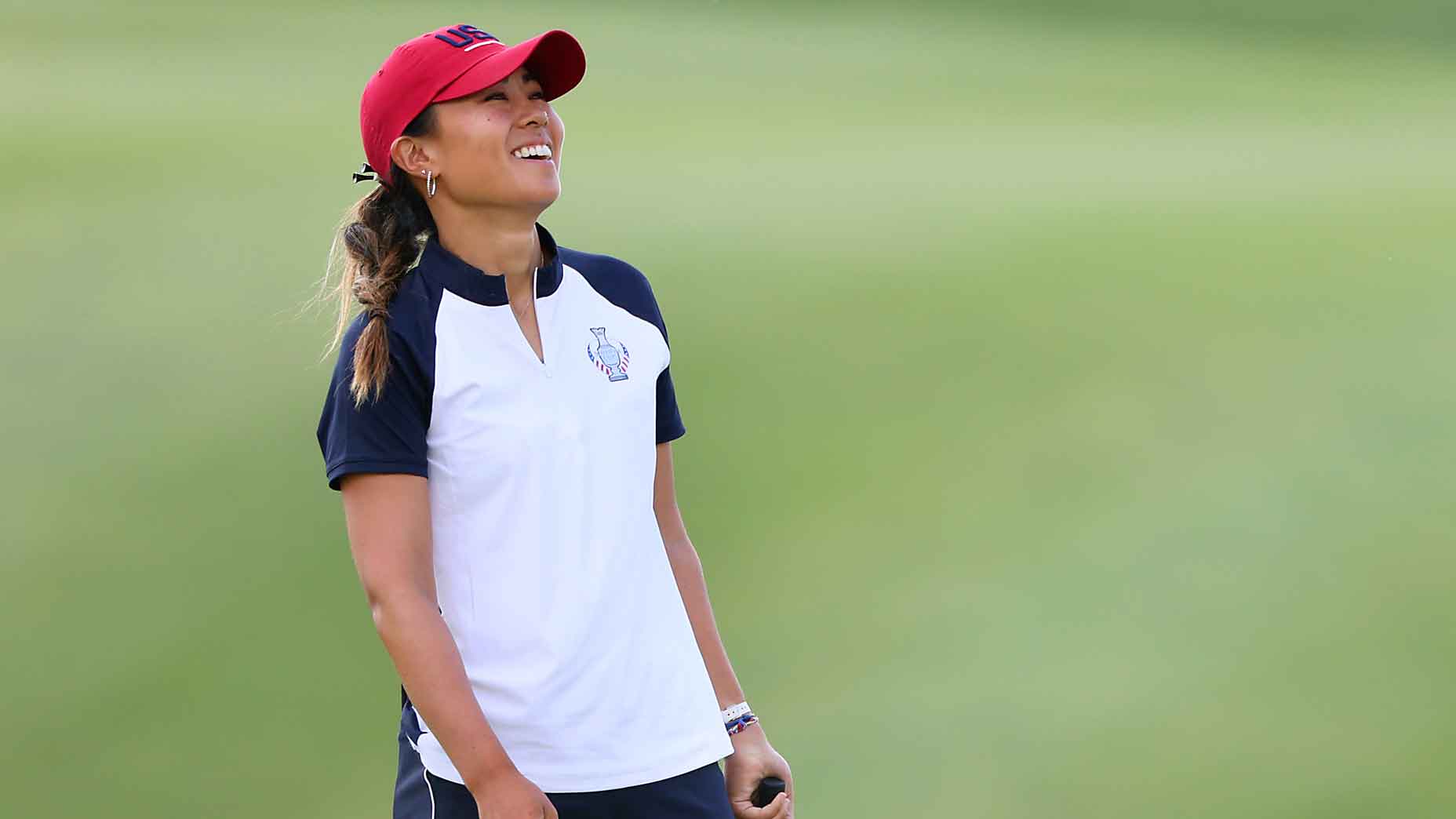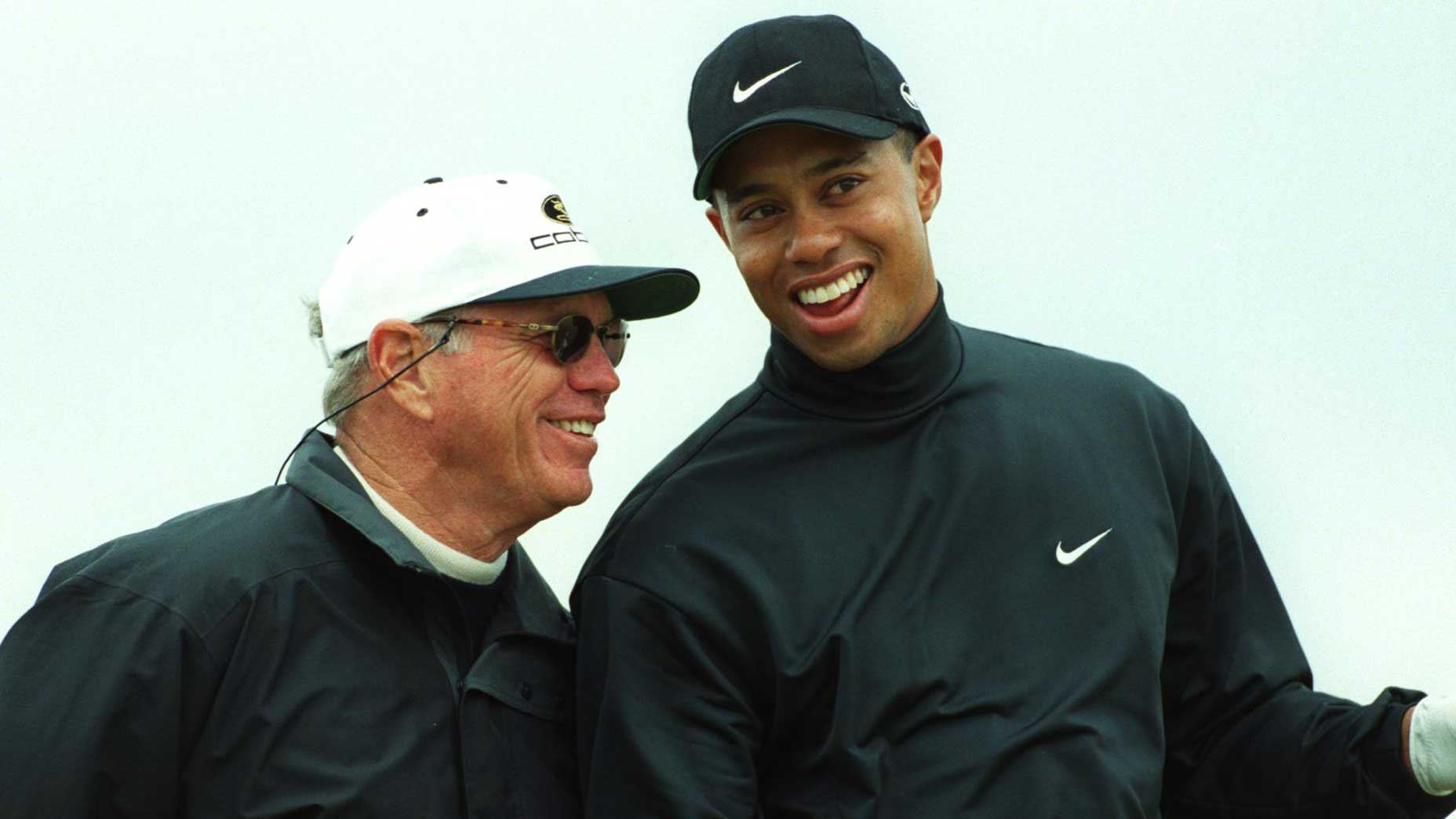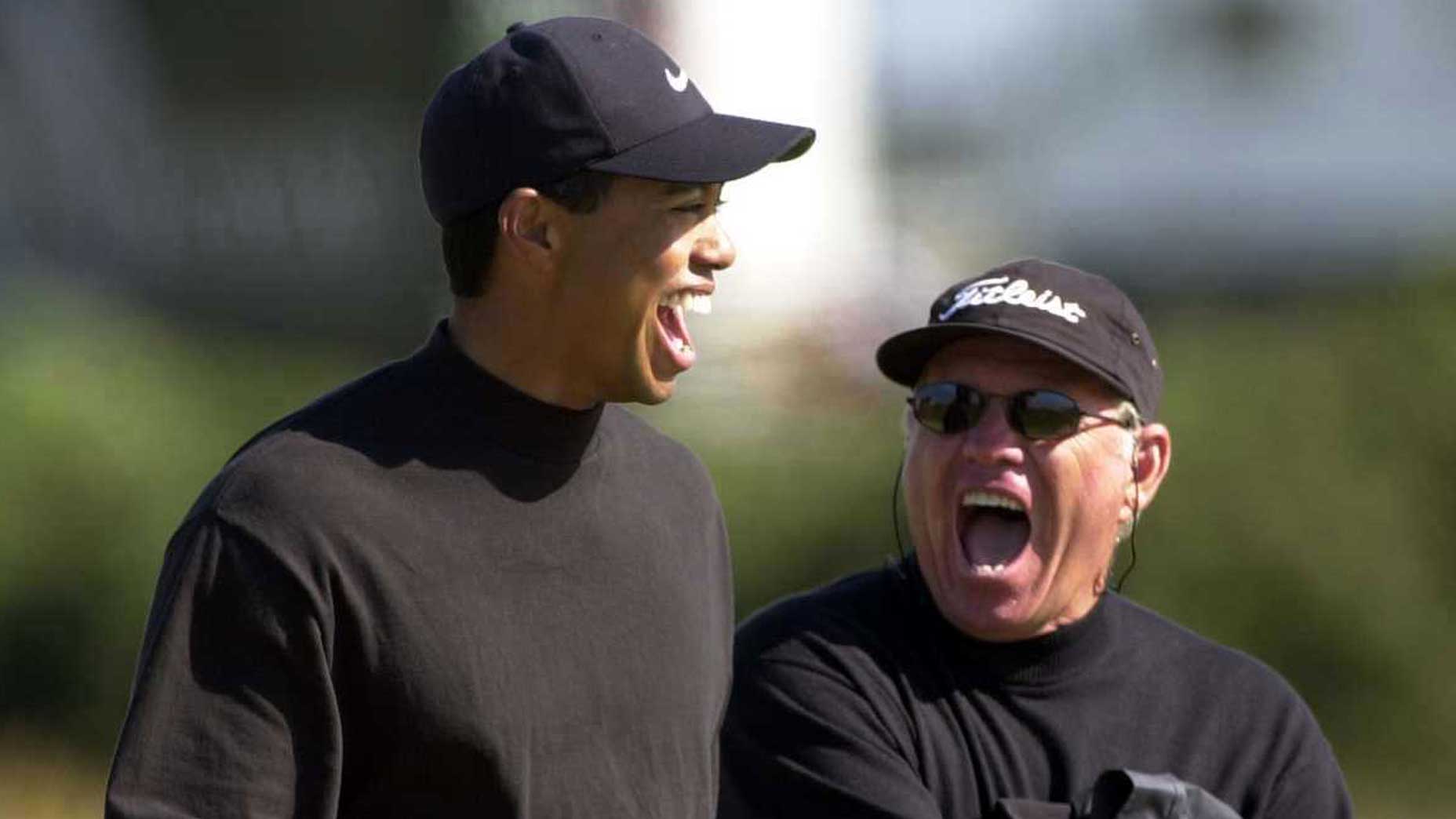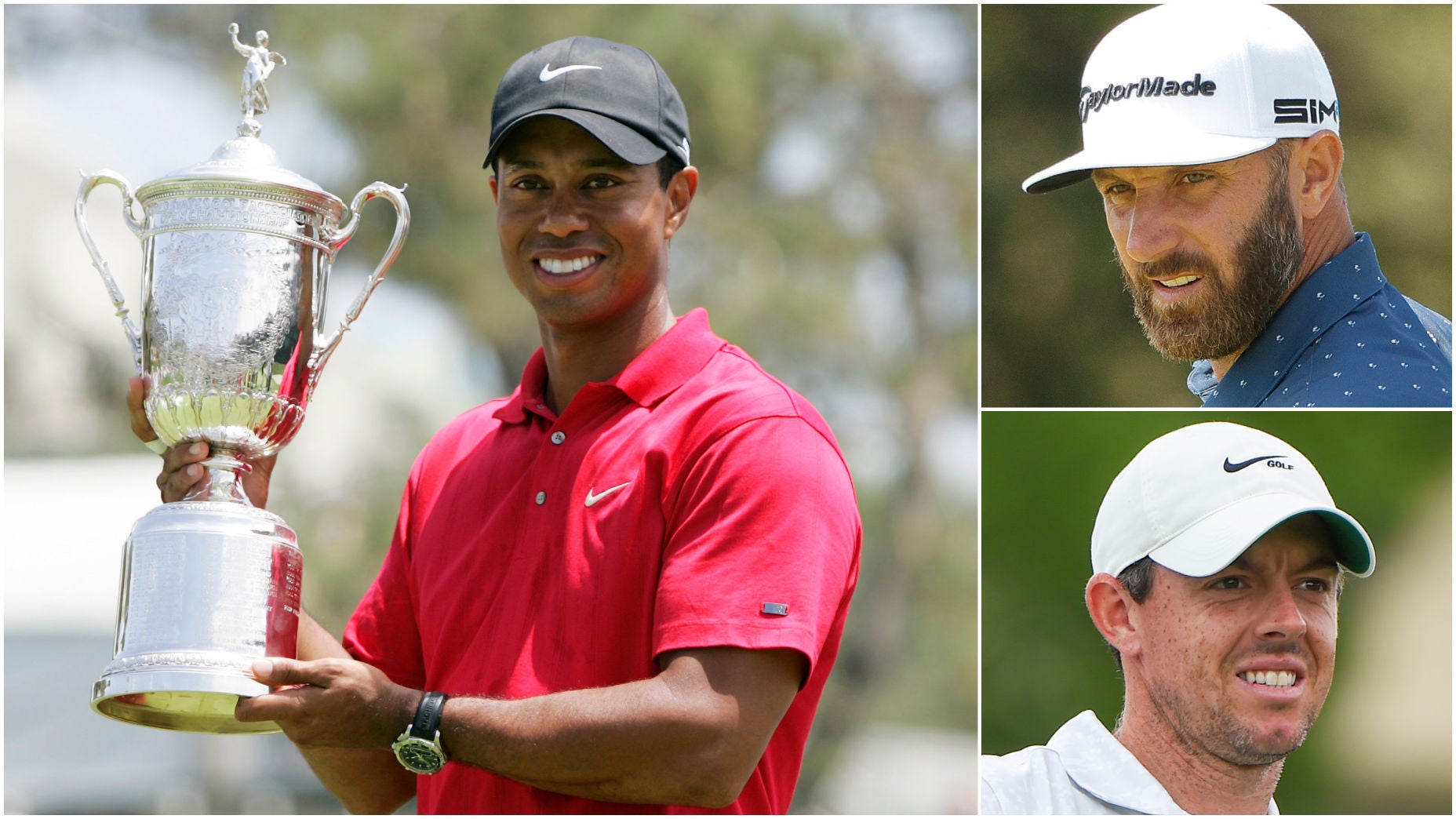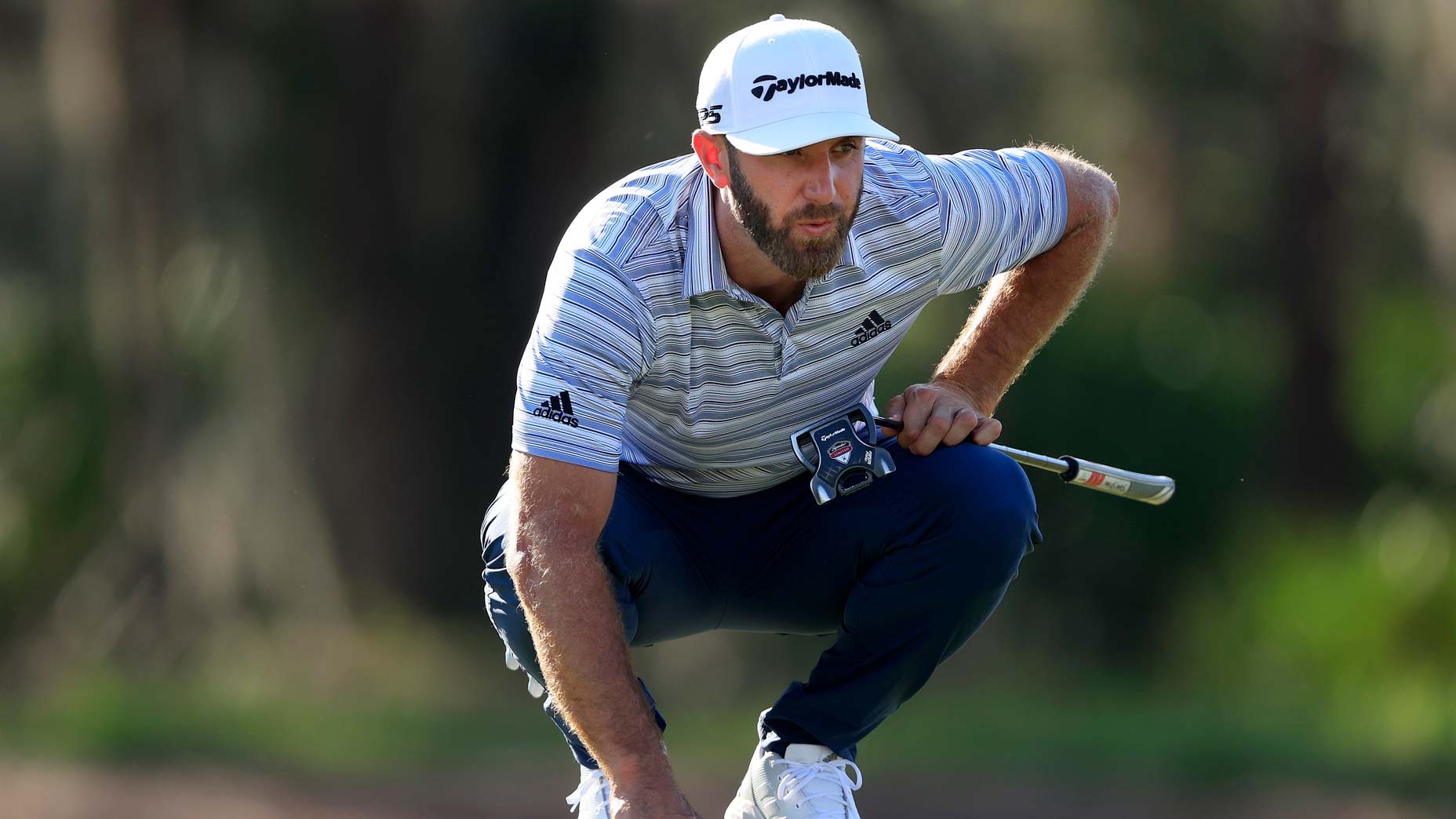Butch Harmon says this is the simple ‘secret’ to playing good golf
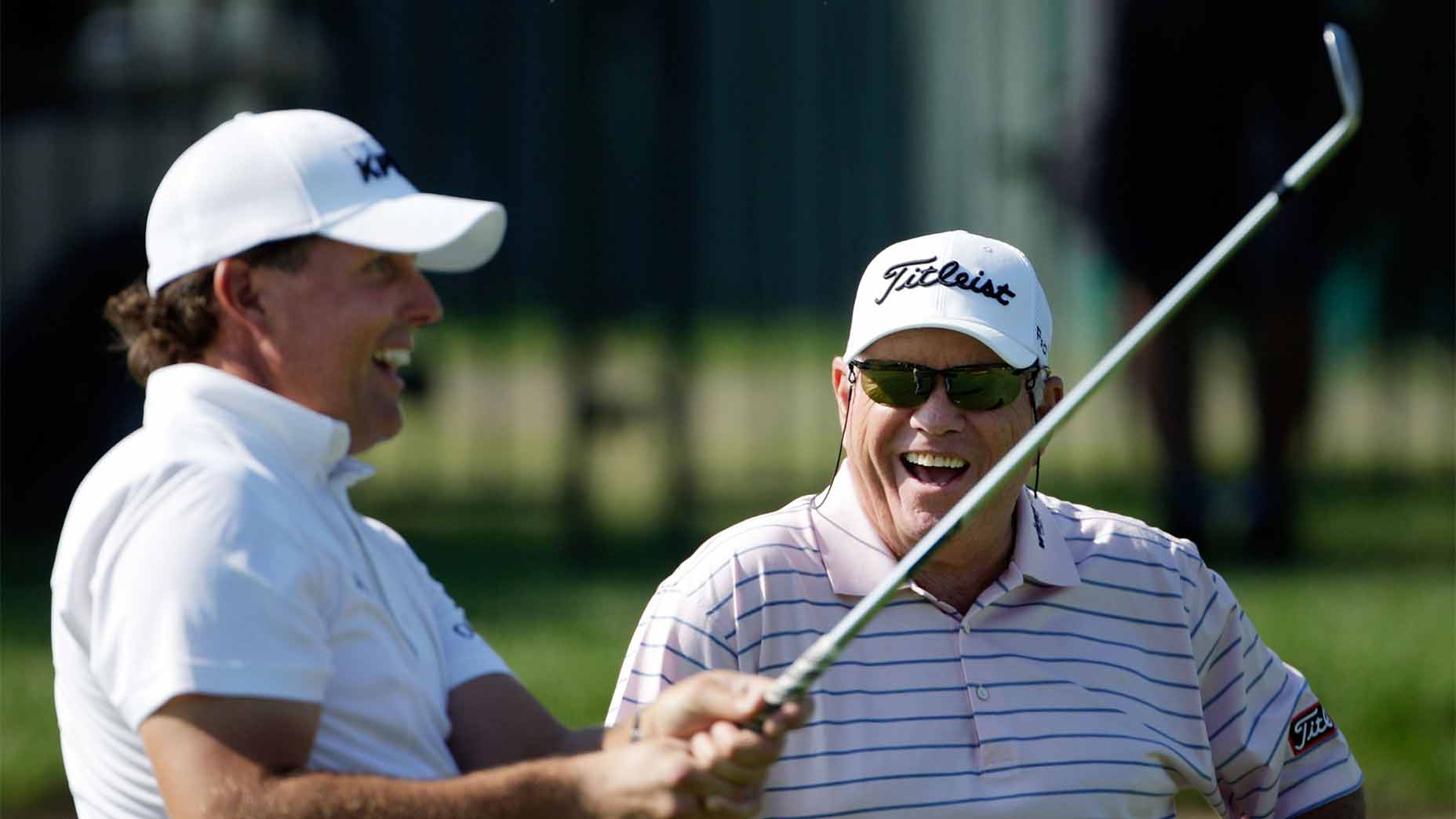
Butch Harmon looks on with Phil Mickelson.
Getty Images
There’s no golf coach alive today who knows more about the game than Butch Harmon. The GOLF Hall of Fame teacher and No. 1 teacher on Golf Digest’s list has helped an impressive crop of players win majors, from Tiger Woods to Greg Norman to Phil Mickelson to Dustin Johnson.
When Butch speaks, we listen, as we did this week when Butch appeared on Barstool’s Fore Play podcast. It was a great interview, which you can listen to yourself in full below, and along the way he dropped lots of interesting nuggets about the golf swing — including what he says is the “secret” to playing good golf.
Throughout his appearance on the show, Butch preached that good coaching means forgoing systems and methods. It’s an individual art; no two people are the same, says Butch, and therefore your advice to them should vary, too.
“I don’t believe systems. You can’t teach everybody the same … different handicaps, different flexibilities, different strengths, everybody’s different,” he says. “There is no one way to swing a golf club. If you’ve ever been to the Hall of Fame in St. Augustine, you can see some horrendous swings in there.”
Which led to Butch explaining what he says is the simple truth to playing good golf: Finding the clubface square at impact, with a fairly neutral swing path. It doesn’t matter how you do it, it just matters that you manage to do it consistently.
“We can go down to our greatest players of all time; nobody’s going to teach you to swing like Arnie, or Jack with his flying right elbow; Lee Trevino aiming 50 yards to the left and hitting it to the right,” he said. “You don’t have to have a perfect swing to play golf. The secret to playing golf is to get the clubface on the right path and square at impact. That’s it.”
As long as you do that, swing your swing, Butch says. But embracing that individuality doesn’t mean never working on your golf swing. The opposite, in fact, which is why Butch shortly thereafter outlined his general approach.
How Butch Harmon looks at golf swings

“First thing I look at is basic fundamentals: grip, posture, alignment, ball position,” he said. “You’d be amazed how many great players get out of position before they swing. Most of it is alignment; some will aim too far right or two far left.”
Next he sizes up a player’s swing and tries to figure out if the player is best suited to hitting the ball from right-to-left or left-to-right.
“Then after that, I try to look at what the natural motion is, and what kind of shot does it lend itself to: A draw, a fade, higher or lower trajectory,” he said. “Then I’ll ask them, ‘When you’re playing bad, what’s your miss?'”
It’s at that point where Butch says he goes searching for the root cause. If a player has a golf swing which looks like a fade golf swing, but the ball slices too often, he begins looking for what he considers the root cause of his troubles.
“Once you find a natural ball shape, and if he’s not hitting that, you have to ask yourself, Why is he not hitting that?” he says. “Think about it this way, if you go to the doctor and you have a broken ankle, a sprained ankle, and cancer, well we’re going to forget that other s— and take care of the cancer. So I always look for that in the person’s swing, because I know if I can fix that, it will make four or five things better.”
It’s a simple, proven method that has helped players of all levels play their best. And the next time you’re struggling on the course and don’t have access to a good coach, try taking yourself through the same process.



